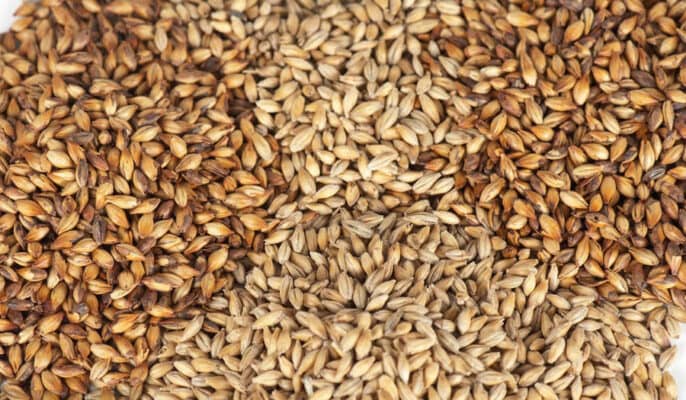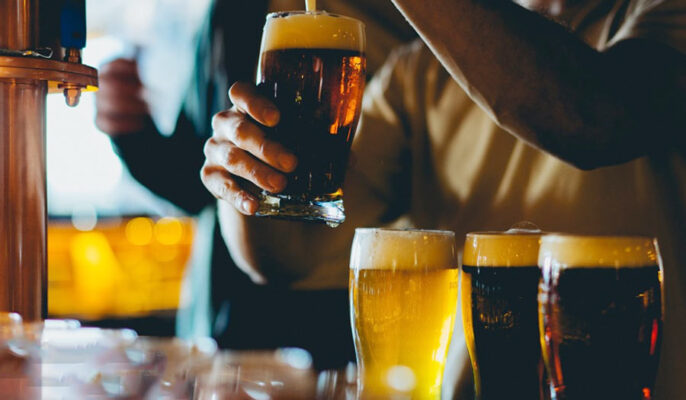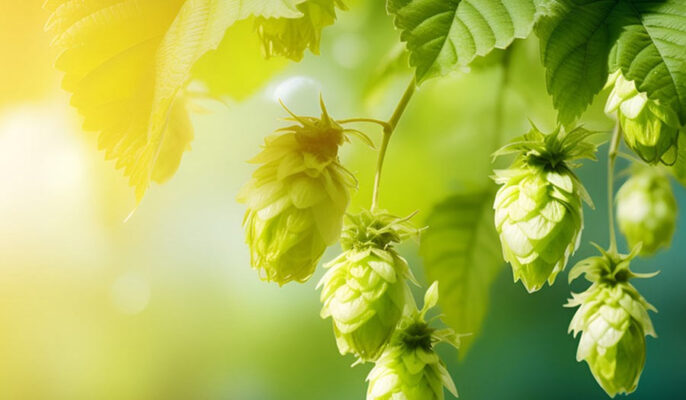Beer has quite a complex flavor and aroma, so it’s a bit surprising that there are only 4 main ingredients in beer. The art of beer brewing comes from the process. The conditions under which these ingredients are mixed together and the quality of each ingredient will create a unique tasting beverage. All beers are made from grains, hops, yeast and water, although used in different proportions depending on the style being made. If you’re wondering what the ingredients are in craft beer, this article can help you get up to speed.
Cereálie
The grain used in craft beer is usually malted barley (barley grains that have been soaked in water). These starches are converted into sugars, which interact with yeast during fermentation to produce alcohol. The grains in beer affect many factors. The color of the grains will determine the color of the final drink, whether it’s a pale golden beer or a stout as dark as the night sky.

The malting process simulates the germination of grains, which metabolizes the natural grain sugar (called maltose), which is what yeast feeds on during fermentation. To do this, soak the seeds in water until the plants begin to grow. Before it grows from the seed, it is dried in a kiln. Drying methods produce malts of different colors and flavors.
Grains give beer three important qualities:
- Malt flavor and aroma: from light corn flavor to burnt flavor and mocha flavor, and a variety of flavors and aromas between.
- Color: This depends on the type of malt used. All beers are made from large amounts of light-colored malt because they contain special chemicals called enzymes that convert malt starch into sugar.
- Fermentable material: meaning “food for yeast”. The sugars from the malt provide all the food that the yeast consumes and converts into alcohol and carbon dioxide.
Voda
Water is the most important ingredient in beer. Craft beer is actually (usually) over 90% water, so the quality of the water used to brew it is quite important. At the home brewing level, the most common types of water used to brew beer are:
- Well water
- Tap water
- Spring water
- Distilled water
- Reverse osmosis water
Most brewers prefer to use filtered water. By using filtered water, breweries can achieve the desired balance between purity and mineral content while eliminating contaminants. Enough calcium and magnesium must remain to promote fermentation. Reverse osmosis filtration removes the water’s natural taste and flavor as well as minerals.
Chmel
Hops provide beer with its spicy aroma, variety of flavors, and subtle to rich bitterness that balances the sweetness of the malt. They are the flowers of a perennial vine that resemble soft green pine cones and contain a yellow powder called lupine. The resins and oils contained in this powder are essential for beer brewing. Hops have another useful function – stability. Beers have a long shelf life because they are antibacterial and kill certain microorganisms that don’t do the beer any good.
Droždí
Yeast is the third largest component of beer. During fermentation, yeast consumes the sugars from the malted grains and excretes ethanol and carbon dioxide in return.
There are two main categories of brewing yeast: ale yeast and brewer’s yeast. There are hundreds of different yeast strains within these categories. Certain strains are suitable for brewing specific styles of beer. Some brewers believe that yeast is the most important element in determining the character of beer.
Ale yeast is a top-fermenting yeast that forms a floating “yeast cake” on top of the liquid during fermentation. For this reason, ale yeast is often described as “top fermented.”
Brewer’s yeast is bottom-fermenting, which means it spends some time under liquid during the fermentation process. Thus, it is often called “bottom fermentation.”


Steps to making craft beer
Sladovnictví
The grain is kiln-dried back to a moisture content of three to five percent. The final stage is roasting the grains.
Mash and lauter
This step soaks them in hot water, a process called mashing, which activates the amylase enzyme in the grains, causing them to break down and release the sugars. The water is then drained away, leaving a sweet, syrupy liquid called wort. There is still some grain left, and the next step is to filter or separate the wort from the spent grain.
Boil and add hops
Once the wort is made and filtered, hops and other spices are added. Hops provide bitterness to balance the sugar in the wort. Hops also have natural antiseptic properties. For example, the India Pale Ale (IPA) variety is one of the most popular craft beers,
Kvašení
After the hops are added and the boil is completed, the liquid goes into the fermentační nádoba and yeast is added. Although there are more than 1,500 varieties of yeast, there are two different types of yeast used in craft beer: upper-crop yeast and lower-crop yeast. Yeast is a living, single-celled microorganism classified as a fungus. Once yeast is added, it begins to break down sugar and produce alcohol and carbonation (CO2). The beer is fermented at a higher temperature, around 64 degrees, and is ready to drink within three weeks.
Stáčení do lahví
Once fermentation is determined to be complete, the final step is filling bottles, kegs or barrels, etc.




